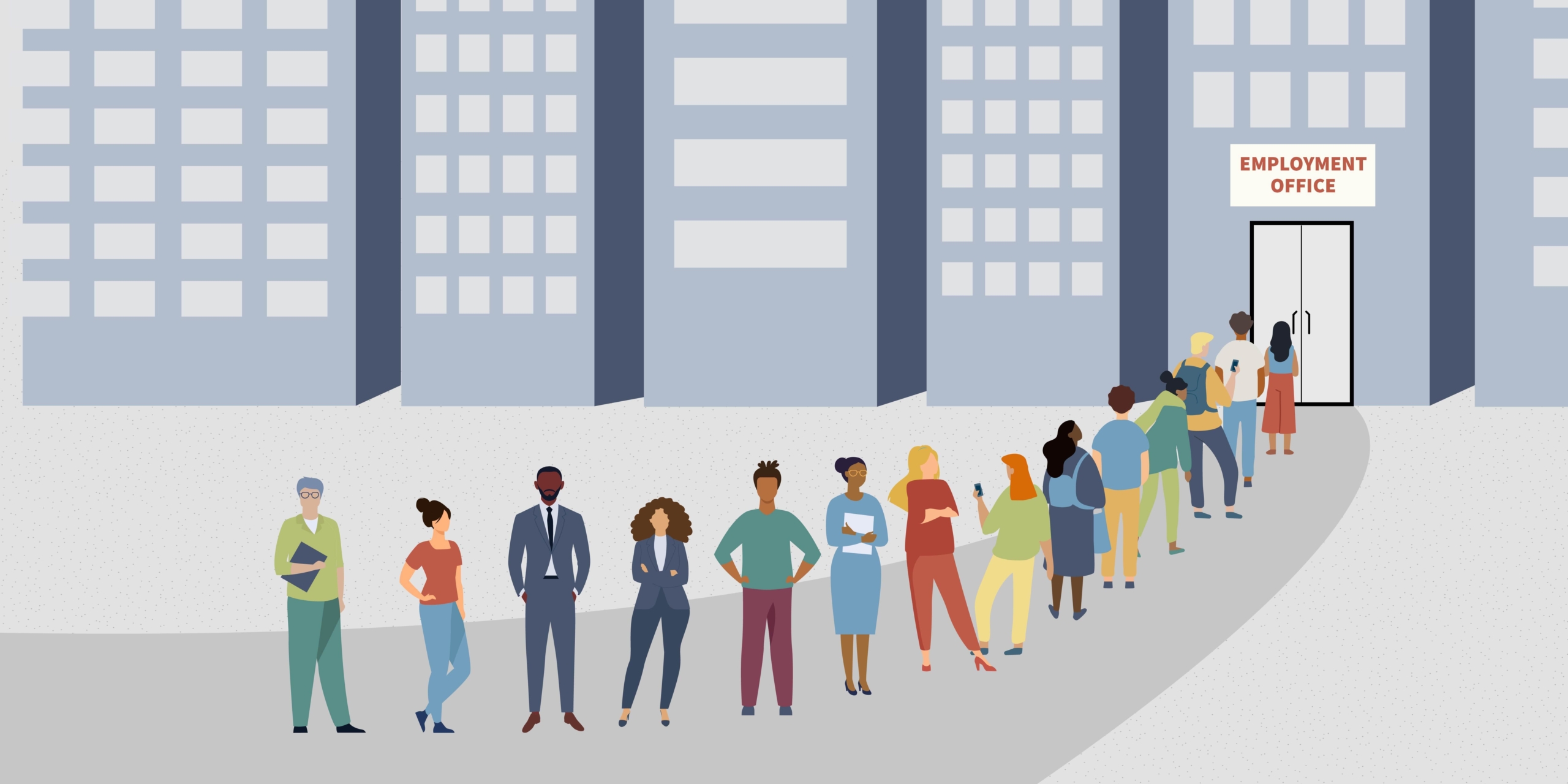Lasting Disruption to the Labor Market
Job growth continued in July but has slowed considerably from earlier this summer. Deeper analysis reveals that some worrying trends have emerged in the labor market.

After positive employment trends emerged early this summer, recently released data from the Department of Labor shows that job growth slowed considerably in July. Further analysis indicates a lasting disruption to the U.S. labor market that is likely to deepen if the coronavirus is not contained.
A staggering 20.7 million jobs were lost in April, marking the steepest drop in employment on record.1 Employers have since restored over 9 million of these jobs, but the ongoing pandemic may undercut this partial rebound. Unemployment insurance claims dropped in July but lingered well above pre-outbreak levels, while Covid-19 cases surged throughout the month. Several states that had eased lockdown measures and opened their economies early were forced to tighten restrictions to curb the spread of the coronavirus.
The effects of the pandemic, and lockdown measures put in place to counter it, have hit the labor market unevenly. The services sector has accounted for roughly 84 percent of the total job losses this year. Over the last three months, 43 percent of those jobs have been recovered. However, much of this uptick occurred in industries that remain vulnerable to Covid-19, which Dr. Deborah Birx recently warned had become more widespread than when the virus first appeared in the United States earlier this year.
A prolonged nationwide outbreak could precipitate further job losses. This chart simulates the effect that a second wave of infections could have on the services sector. Use the slider to adjust the intensity of the wave.
With social distancing measures leaving hotels and restaurants across the country operating at a reduced capacity, the leisure and hospitality industry has, unsurprisingly, witnessed precipitous drops and rapid rises in employment. Over 42 percent of the job growth since April occurred within the industry. Another 16 percent came from wholesale and retail trade—which includes department stores and car dealerships.
These two industries account for well over half of the recovered jobs, but they are particularly vulnerable to Covid-19. As states enact different models of reopening or are forced to implement stringent lockdown measures, job growth could grind to a halt.
Assessing what may lay on the horizon becomes even more concerning when accounting for jobs that may never be recovered. Most people who have lost their jobs since April have been temporarily laid off and plan to return to work once the coronavirus is contained, particularly in the industries that have been the most impacted by temporary business closures.
For other workers, there is no such optimism. Their jobs have dried up due to the broader economic downturn. The share of permanent job losers3 relative to the overall labor force increased from 1.6 percent in April to 2.3 percent in July, and the three-month average jumped by 82 percent compared to the same period last year.
Although July saw a small decrease in permanent job losses compared to June, this could change as the economy slumps. Permanent job losses have historically crested on the tail end of past recessions. In the wake of the 2007-2008 financial crisis, losses did not return to pre-recession levels until the end of 2015.
As the United States wrestles with the long-term consequences of the current economic downturn, it is critical to monitor jobs disappearing from the labor market. This is especially important because these figures can—at first glance—be overlooked.
Temporary vs Permanent job loss
For instance, the number of leisure and hospitality workers temporarily laid off shot up from 469,000 in March to a headline-grabbing 4.2 million in April before sliding to 2.3 million in July.4 Setting aside the health risks of restaurants and other businesses reopening, this drop could be interpreted as a sign of modest recovery. Over the same period, however, the number of permanent job losers has more than tripled.
This trend might prove the norm if the labor market contracts and individuals who were once temporarily laid off lose their jobs outright. Despite a minimal change in the top-line figures between June and July, several industries are experiencing elevated levels of permanent job loss compared to last year.
Source: Department of Labor
The impact of these losses could be far-reaching. Losing a job can negatively affect the earnings of displaced workers once they find new employment and even handicap the economic prosperity of their children when they enter the labor force.
Effectively responding to the shifting employment landscape requires leaders in Washington to implement policies to mitigate the worst consequences of the current recession on the labor market. The United States has already provided support to individuals and businesses through a variety of channels, including the CARES Act and Dislocated Workers Grants. States have started to band together to re-equip unemployed workers. Leaders across both the public and private sectors—including technology giants like IBM and Apple—are also reevaluating the credentials workers need to land a job, which could spur growth. Yet as the recession continues, a more concerted effort will be needed.
Other advanced economies have implemented policies aimed at retraining displaced workers. The Australian government set aside 2 billion Australian dollars ($1.4 billion) for upskilling workers. Sweden is providing tools to shift affected individuals into promising green industry occupations, while the European Commission is launching training and vocational programs to assist those seeking to switch careers.
Addressing the health crisis must remain at the forefront of U.S. government efforts. It is nonetheless also critical that steps be taken to create opportunities for people that have permanently lost their jobs. These measures will not only aid the immediate economic recovery, but better position the nation’s workforce for the new global economy that emerges after the coronavirus is defeated.